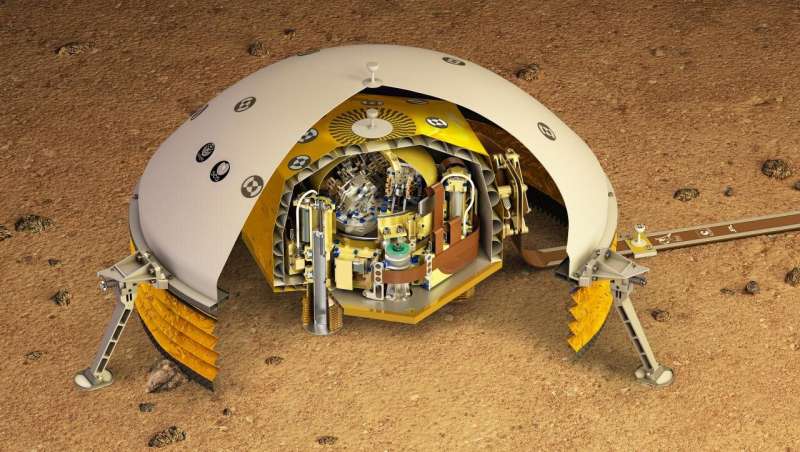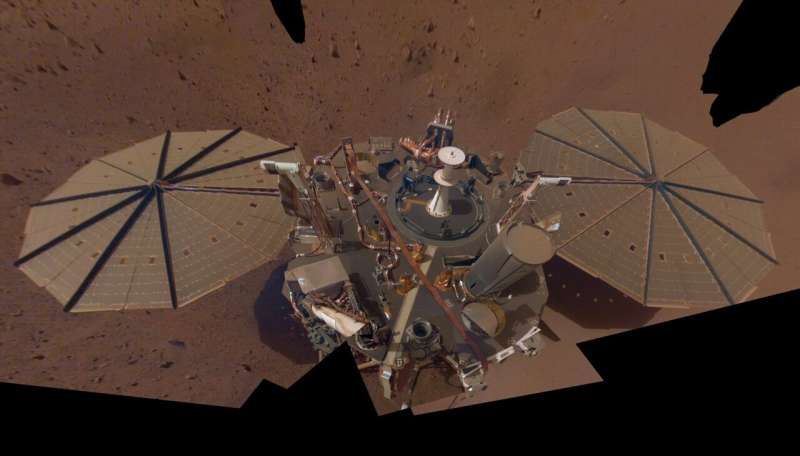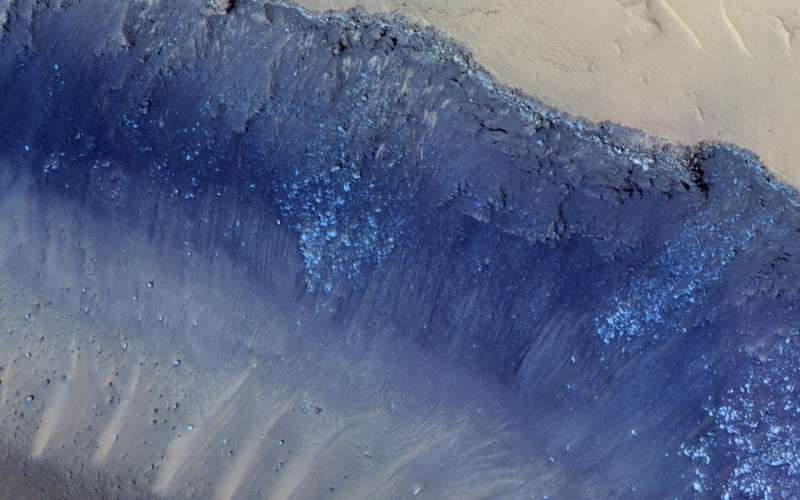Brigitte Knapmeyer-Endrun at the University of Cologne's Institute of Geology and Mineralogy and Dr. Mark Panning at Jet Propulsion Laboratory, California Institute of Technology (Caltech). InSight stands for "Interior Exploration using Seismic Investigations, Geodesy and Heat Transport." NASA's lander, which landed on Mars on 26 November 2018, explores the crust, mantle and core of the red planet. The paper "Thickness and structure of the Martian crust from InSight seismic data' will appear in Science on July 23.
In the past, only relative differences in the thickness of the Mars crust could be estimated, and additional assumptions were required to obtain absolute thicknesses. The resulting absolute values thus showed large scatter, depending on which assumptions were made. Seismology now replaces these assumptions with a direct measurement at the landing site, and thus calibrates the crustal thickness for the entire planet. This independent data point also allows estimating the density of the crust.
"What seismology can measure are mainly velocity contrasts. These are differences in the propagation velocity of seismic waves in different materials," said Knapmeyer-Endrun, lead author of the paper. "Very similar to optics, we can observe phenomena like reflection and refraction. Regarding the crust, we also benefit from the fact that crust and mantle are made of different rocks, with a strong velocity jump between them." Based on these jumps, the crust's structure can be determined very precisely.
The data show that at the InSight landing site, the top layer is about 8 (+/-2) kilometers thick. Below that, another layer follows to about 20 (+/-5) kilometers. "It is possible that the mantle starts under this layer, which would indicate a surprisingly thin crust, even compared to the continental crust on Earth. Beneath Cologne, for example, the Earth's crust is about 30 kilometers thick," Knapmeyer-Endrun explained. Possibly, however, there is a third crustal layer on Mars, which would make the Martian crust under the landing site about 39 (+/-8) kilometers thick. That would be more consistent with previous findings, but the signal from this layer is not essential to match existing data. "In both cases, however, we can rule out the possibility that the entire crust is made of the same material known from surface measurements and from Martian meteorites," the geophysicist said. "Rather, the data suggest that the uppermost layer is composed of an unexpectedly porous rock. Also, there could be other rock types at greater depths than the basalts seen at the surface."

The single, independent measurement of crustal thickness at the InSight landing site is sufficient to map the crust across the entire planet. Measurements from satellites orbiting Mars provide a very clear picture of the planet's gravity field, allowing the scientists to compare relative differences in crustal thickness to the measurement taken at the landing site. The combination of these data provides an accurate map.

The crustal thickness of Mars is particularly interesting because the crust formed at an early formation stage from the remnants of a molten mantle. Thus, data on its present-day structure can also provide information on how Mars evolved. In addition, a more precise understanding of the evolution of Mars helps to decipher how early differentiation processes unfolded in the solar system and why Mars, Earth, and other planets are so different today.
Explore further



